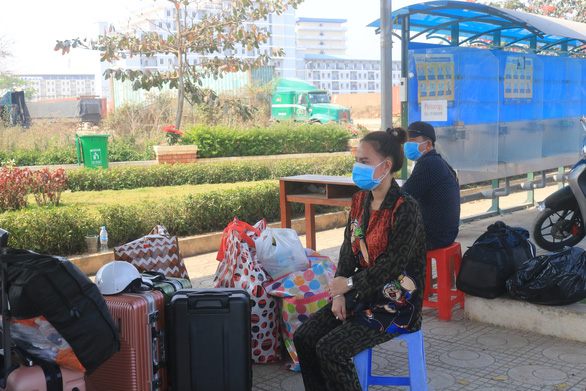Doctors suggest that COVID-19 patients, as well as at-risk people, can bring their own food and drinks to quarantine places; however, they should be mindful of the restrictions in isolation wards.
Answering Tuoi Tre (Youth) newspaper, Le Van Phuong, director of Makeshift Hospital No. 1 for COVID-19 Treatment in Ho Chi Minh City, patients admitted to the hospital have the right to bring their belongings, including food and drinks, but not alcoholic beverages, narcotics, or other banned items.
Patients should not bring an excessive amount of food, as meals are always available inside isolated zones or hospitals.
On top of that, officers inside such isolated areas will make sure to deliver packages directly to those in quarantine if supplies are sent from their friends and family.
“We believe that patients should be taken care of and supported to the best of our ability,” Phuong said.
The doctor advises that patients should not be overtly anxious entering the isolation period, as medical staff are available at the premises and on the hotline on a 24/7 basis to address patients’ concerns.
Patients also have access to running water, electricity, and free Wi-Fi during their time in quarantine.
Doctor Tran Chanh Xuan, director of the Cu Chi District Hospital for COVID-19 treatment, said food and drinks inside makeshift hospitals or isolation zones can run scarce in one to two days if too many patients are admitted at the same time.
Patients can still bring their own food, but not without serious consideration of food safety, as incidents of poisoning from spoiled food will put more of a burden on the healthcare officers.
It is preferred that patients source a limited amount of processed food with long expiry dates from well-known brands.
It is advised that patients limit the items in their luggage, as most personal necessities, including face towels and clothes, are given out for free at the hospital.
Care packages for patients from friends and family should be kept streamlined and must not weigh more than seven kilograms.
Xuan also addressed the Delta variant of the COVID-19 pathogen, a more contagious strain that has been wreaking havoc in Vietnam and causing mass hysteria among the public.
“Patients should not be too concerned about the Delta variant, as more than 70 percent of infection cases without symptoms manage to stay well, while the percentage of severe conditions is not too high,” he said.
“Once admitted, patients will get their symptoms treated by doctors.
"They will be entered into positive care if the situation worsens.”
Vietnam has been grappling with a new outbreak since April 27 after more than a year of success in containing the virus.
The Ministry of Health has detected 33,086 local infections in 58 out of 63 provinces and cities ever since.
By comparison, Vietnam confirmed 106 community cases in the first wave from January 23 to April 16, 2020, 554 in the second from July 25 to December 1, 2020, and 910 in the third from January 28 to March 25, 2021.
The country has administered over four million vaccine doses to medical workers, teachers, factory workers, and other frontline staff since it rolled out inoculation on March 8.
Nearly 284,000 people have been fully vaccinated.
The government set a target of immunizing two-thirds of a population of nearly 98 million people against COVID-19 by the first quarter of next year.
Like us on Facebook or follow us on Twitter to get the latest news about Vietnam!



























